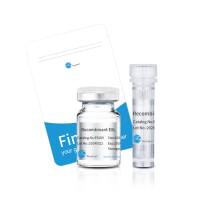In Vitro and In Vivo Methods for Assessing FcRn-Mediated Reverse Transcytosis Across the BloodBrain Barrier
互联网
339
The neonatal Fc receptor, FcRn, mediates endocytic recycling pathway that prevents degradation of IgG and is expressed in most endothelial cells. The blood–brain barrier (BBB), formed by brain endothelial cells sealed with tight junctions, restricts transport of IgG from the blood to the brain. In contrast, it has been suggested that IgG undergoes efflux from the brain parenchyma via reverse transcytosis across the BBB mediated by FcRn. The fast elimination of therapeutic antibodies from the brain via this route may limit their therapeutic potency. In vitro and in vivo methods described in this chapter were developed to facilitate research into mechanisms and dynamics of brain efflux of compounds, including FcRn-mediated reverse transcytosis across the BBB. The in vitro model uses immortalized adult rat brain endothelial cells which express high levels of FcRn. In vivo models use Prospective optical imaging to measure the clearance rate of intracerebrally injected FcRn-transported molecules tagged with near-infrared fluorescent probes.









